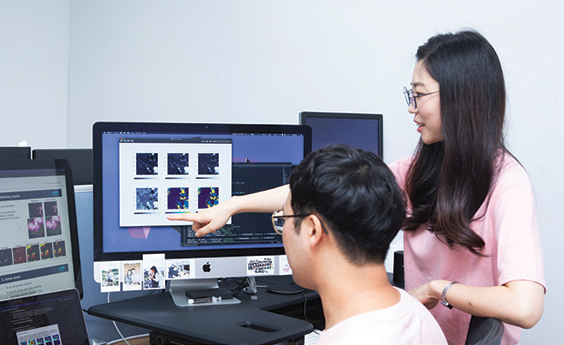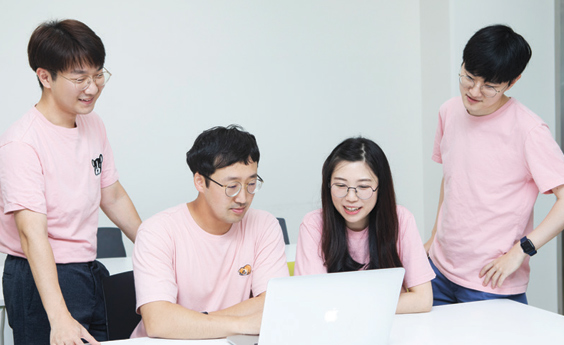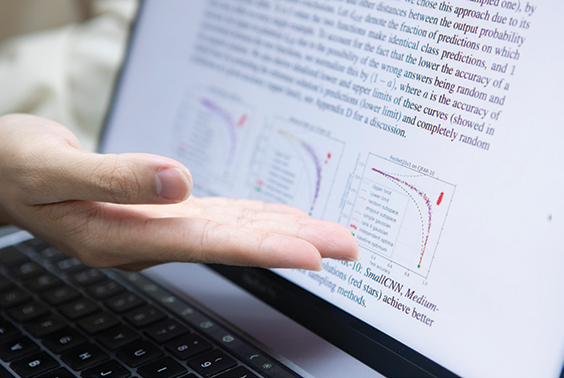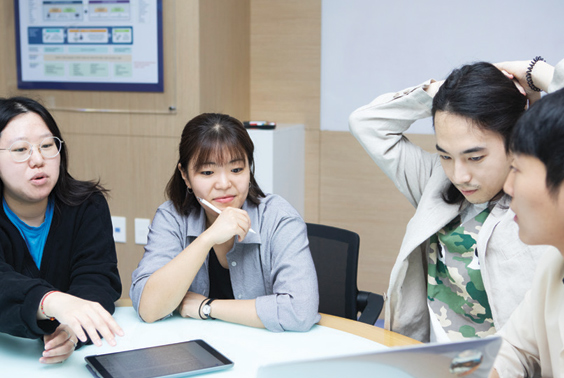
- Club
- AI challengers program [AICP]
본문영역
Stepping-stones to foster creative talents in
AI sector
The AI Challengers Program of UNIST has entered its second phase in fostering creative talented personnel in the AI field. Under the supervision of the U Education & Innovation Center, a long term research started in last March and a short term research in August; both projects are scheduled to be completed in the coming December. We met with three research teams and discussed their performances and future goals.
- Story by Editorial Room Photo by Hyeon-Hee
AI Challengers
Program [AICP]
Program to compose a study group by undergraduate and graduate students for independent research on AI - related themes.
- Goals
- • Foster creative talented personnel in the field of AI
- • Expect the post connection of research and startups based on AI
- Research Period & Fields
- • Period - One year for each team (2021.02.01~12.31) / Operate once a year
- • Fields - AI and AI related applications
- Supports
- • Project operation costs / Exclusive space in the school for each team/ GPU server / Credited internship for undergraduates
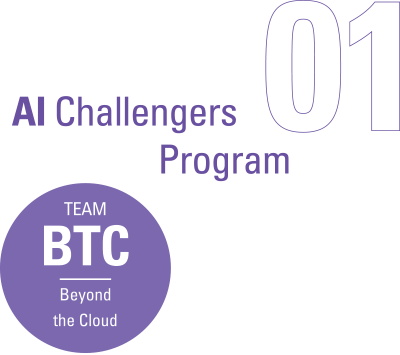 01
01
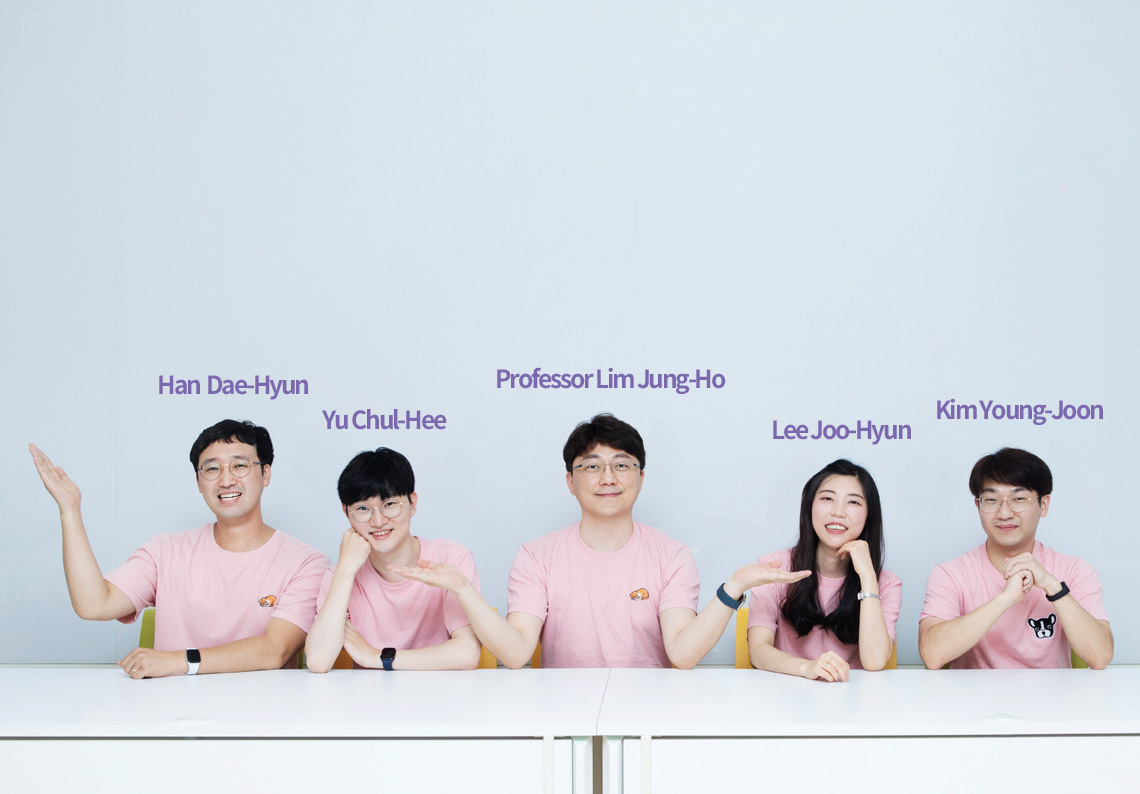
-
Han Dae-Hyun
The convergence of environmental data and AI will be more important. I want to study up to the highest level in this field in Korea. -
Yu Chul-Hee
I want to create the environmental data to diagnose the earth and contribute to the improvement of the quality of life nationwide. -
Professor Lim Jung-Ho
I hope that you will develop a new technique to improve the accuracy and pioneer the AI field. -
Lee Joo-Hyun
I want to develop a deep-learning based technology to observe and predict typhoons. -
Kim Young-Joon
I want to combine AI technique with satellite observed data to contribute to the development of Korea’s research of the polar region.
of climate change and AI-based cloud
detection and prediction
Major technology of cloud detection, climate monitoring and prediction
The detection of cloud in the video taken by a satellite is considered as an essential process to monitor the weather and predict climate change. It is because we need to find out the condition of weather under the cloud and its shadow accurately. BTC (Beyond the Cloud) is composed of four graduate students of Urban and Environmental Engineering, Kim Young-Joon, Yu Chul-Hee, Lee Joo-Hyun and Han Dae-Hyun. They have been studying major technologies to monitor and predict the climate.
Team members of BTC have used AI techniques and proceeded with the monitoring and prediction of natural disasters in the Remote Environmental Exploration and IRIS Lab. There are various research areas being pursued by each team member such as the prediction of a change in thawing concentration in North Pole based on satellite data by using AI, the real-time detection of the path and strength of a typhoon using satellite data from the geostationary orbit, and the prediction of extreme heat conditions by monitoring the highest and lowest temperatures for each day. However, there is one common denominator among these, viz. cloud detection. “Our lab has utilized satellite data to make models in several environment areas of atmosphere, ocean, polar areas, heat wave, fine dust, mountain fire, and drought and proceeded with research to monitor and predict the environmental change. Especially, when cloud exists in the satellite video, it is difficult to understand the information below the cloud, and therefore it is necessary to remove the cloud and the territory of shadow in order to analyze and compute the desired information. It is important to extract the cloud and the shadow generated by the cloud from the satellite video. We have gathered the resources necessary to develop an AI algorithm that can carry out this automatically and accurately”, explained team leader Han Day-Hyun. The AICP held at the right time served as a good opportunity for BTC to start developing the AI-based automatic detection technology for cloud and shadow of satellite video since last March.
Meaningful research will lead to follow-up studies
The BTC explained that they had coordinated with each other for more than 5 years in the IRIS Lab but also started AI studies as a non-major course to pursue a deeper relationship. During the second half of last year, the BTC accelerated the development of a new algorithm by utilizing satellite video data provided by the National Information Society Agency and the Korea Aerospace Research Institute on the basis of in-depth study and understanding of the basic concepts of AI. From the application of the newly developed actual algorithm, some errors have occurred in the detection and analysis such as the recognition of water as a shadow or the recognition of a bright colored land as a cloud. However, the BTC has accomplished a significant performance of low error compared to previously presented researches. In addition, the model developed by the BTC is able to process various satellite videos distinctly and confirm the existence of cloud to detect the territory of cloud. The primary goal of BTC in the AICP is to participate in the Second AI Conference of Korea held at the end of August and make a presentation of past research performances. The BTC plans to open the algorithm and model that will utilize and test other satellite data and raise the accuracy of modeling for new development. They have revealed an ambition to post the studied contents on SCI level international journals.
Professor Lim Jung-Ho of the Department of Urban and Environmental Engineering has been guiding the present research. He revealed, “It was impressive to see that a team came up by seeking a common denominator in each individual’s research area to start a significant research called the development of the next generation algorithm for automatic detection of cloud in the high resolution satellite videos.” Also, he mentioned that there was encouragement for continuous research, “It is highly significant to develop a new technique with high accuracy even though there are precedent researches; I hope that they will not stop their research as a one-time event or an experience but move on to the next stage and pioneer a new AI field.”
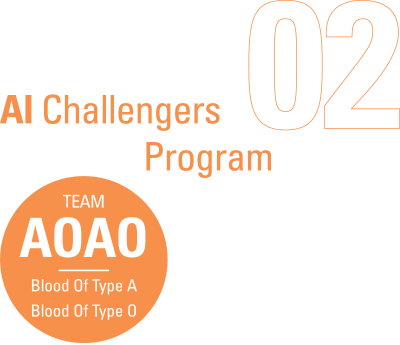 02
02
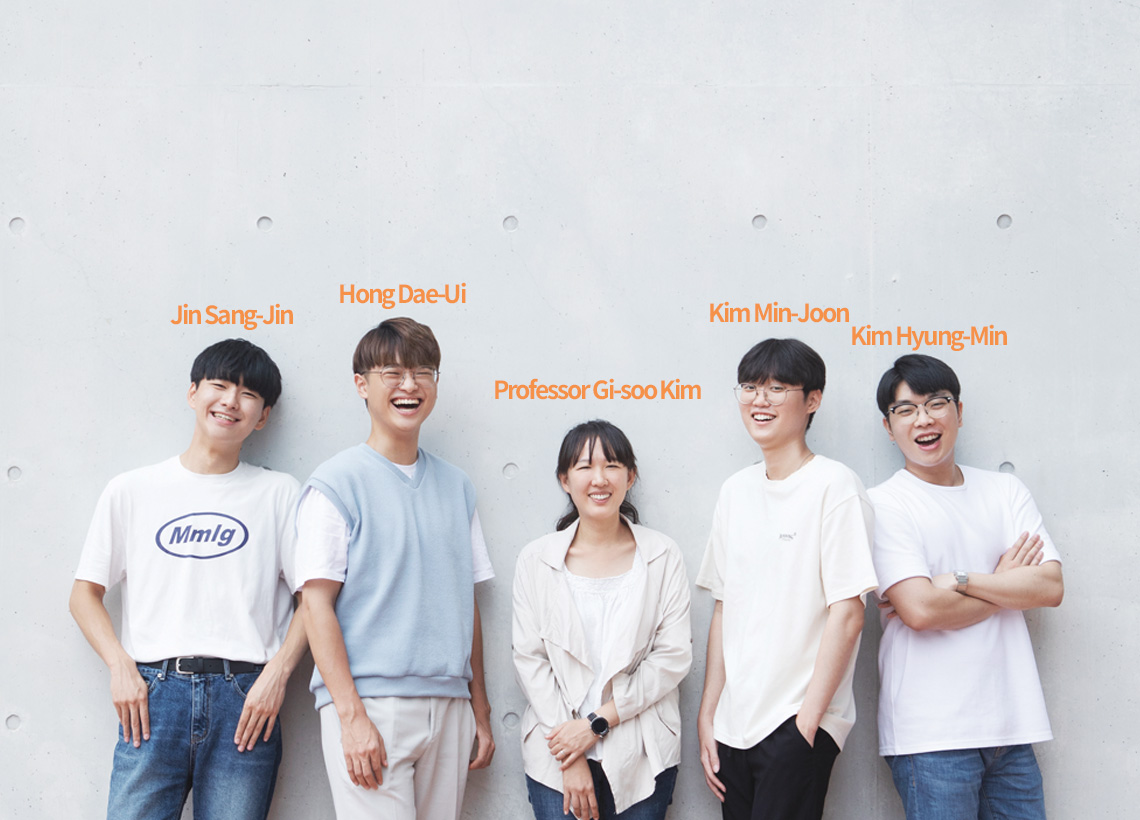
-
Jin Sang-Jin
I have the dream of becoming a developer who can create new value through AI. -
Hong Dae-Ui
Let us become practical and influential researchers who can develop the information medium that is a part of people’s daily lives. -
Professor Gi-soo Kim
It would be better to apply and expand research performances to other areas and set a big goal. -
Kim Min-Joon
I want to participate in research activities diligently to accomplish meaningful results and work on the stage of its application. -
Kim Hyung-Min
If there is no path, find a path.When you find it, make a road.
the news to click!
Induce clicks with the AI-powered personalized news recommendation
“I took the AI class in the second semester of my freshman year. It was fun the more I studied. As an undergraduate student, I participated in the AICP with the intent to understand and study the AI field more deeply.” As mentioned by student Jin Sang-Gin, the beginning of AOAO was some interest in AI. The research theme they pursued was the development of a system recommended in the news article based on strengthened learning’. When using contents or user’s information in a web service of portal, etc, a dilemma exists to solve when a customized service of news articles is provided to an individual user. The web service serves as the contents pool that changes dynamically making it difficult to apply the existing filter method of collaboration, and an advanced algorithm is necessary to learn and compute them. Strengthened learning that seeks a combination for the optimum result has been utilized beneficially through various attempts by the AI algorithm itself to solve such problem.
Kim Hyung-Min, a student who works as the team leader said, “We encounter news through several websites of Email or instant portals. In this regard, I was curious about who would click what kind of news articles. If we could recommend an article with a high possibility of clicking, It would be greatly helpful in the business aspect. Therefore, we have proceeded with research to develop an algorithm that recommends customized news articles for each user through the AI-based algorithm.” The goal of the research is to consider the characteristics of each user, recommend the most proper news articles and induce clicking. It is the core point in developing an algorithm that recommends news articles with the highest possibility of being clicked by a user based on the complex data with the characteristics of news articles that a user has clicked along with the personality, gender, and preferences of the user.
From implementation of precedent researches to the study of new algorithms
The AOAO focused mainly on understanding the basic concept and theory around theses during the previous semester. Now, they are proceeding with the research to which the algorithm of Contextual Bandit has been applied as an open data provided by Yahoo. It is a method to correct the strategy to select an article based on the user’s click feedback to maximize the total sum of clicks by a user in the long term and in the order that will be recommended to the user based on the contextual information between the user and the article. In fact, the AOAO was able to deduce the CTR graph (Click-through Rate) at a success rate that was 1.5 times higher than the random recommendation of news article through the realization and application of algorithm based on the understanding of previous researches. Professor Kim Ji-Soo of the department of Industrial Engineering who has been instructing the present research said, “It is not easy for undergraduate students to understand and realize previous researches. The AOAO has been taking a step by step approach to growth.” He said, “As it is possible to apply research performances to other areas, set a bigger goal and pursue the development of new algorithms.” Team members of AOAO also have received advice from Professor Gi-soo Kim to develop and apply the self-developed algorithm, which can induce the highest number of clicks while comparing the probability at which a recommended news article corresponds to the article clicked by a user.
“We do not just have the goal to jump over a high wall at a stroke through the AICP but we put meaning in the process to accumulate steps. In fact, the process of studying and researching AI is joyful by itself. But I am thinking about developing the present research further to pursue the development of self-algorithms.”
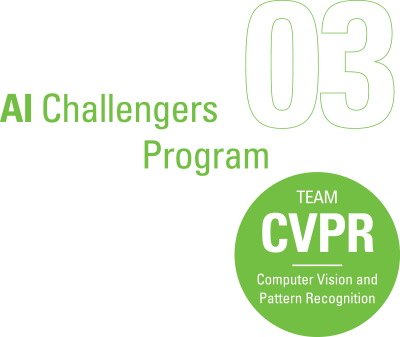 03
03
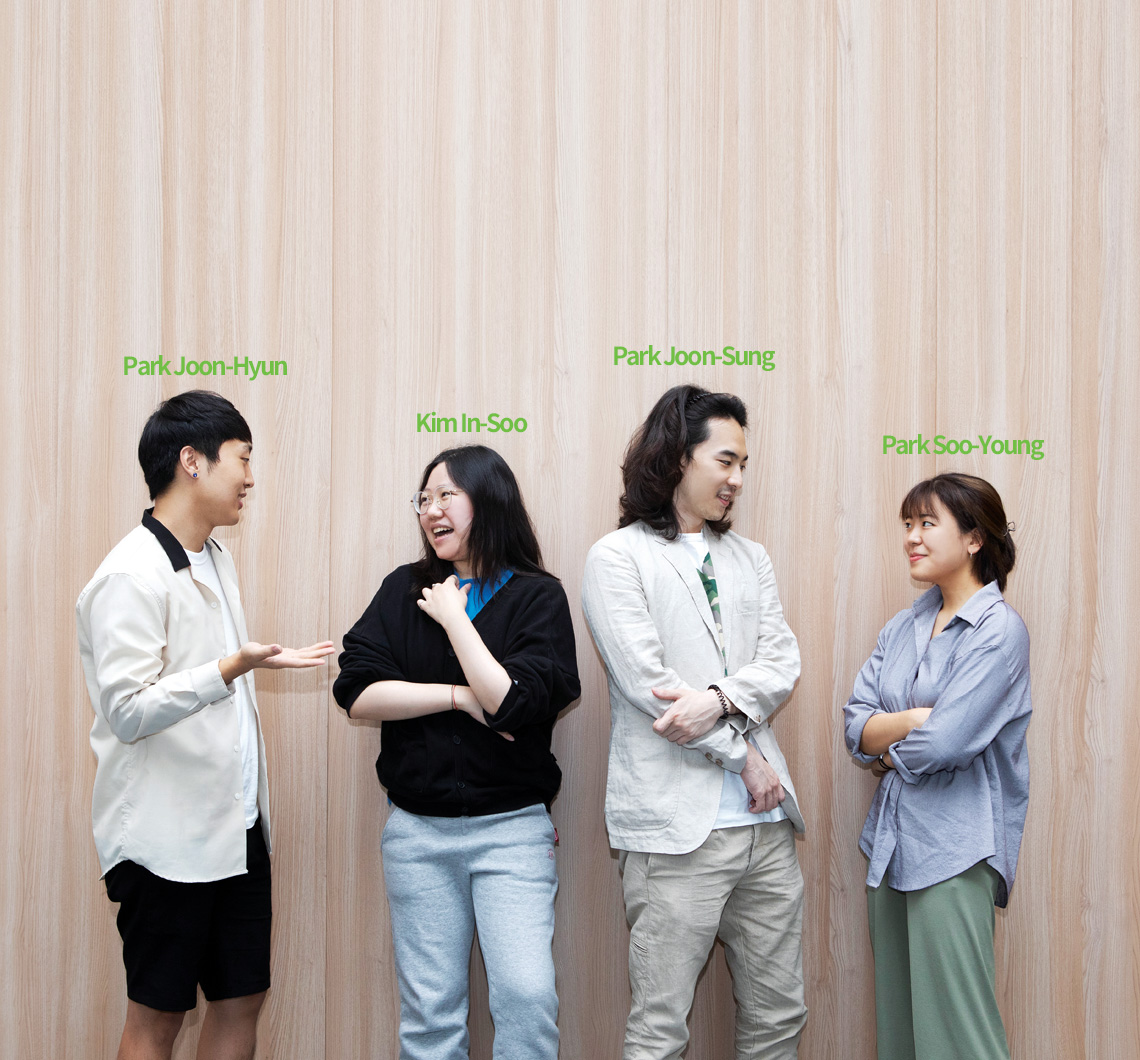
-
Park Joon-Hyun
I wish to make AI of convenience and safety through causality and deep learning. -
Kim In-Soo
I want to explore diverse researches that combine deep learning and causal learning. -
Park Joon-Sung
I want to become an AI researcher who will grow continuously to lead the future. -
Park Soo-Young
I want to understand the world better through data and AI. I wish to verify the causality among diverse elements that constitute the world and contribute to the process of reasoning.
Computer Vision
From Learning to Research
Causal reasoning paradigm beyond awareness of simple pattern
With advances in the technology of machine learning and deep learning, AI has accomplished the capabilities to exceed the abilities of a man in territories where it was once considered human skills and judgment were indispensable. Real-time voice translation or face recognition has already exceeded the abilities of a man. However, it raises the inevitable question if we could trust AI, given reports of accidents such as an autonomous driving vehicle hitting a pedestrian to death or a car colliding with an overturned truck. It brings out the reason to support such assertion that cause and effect must be understood beyond a simple recognition of pattern. The ‘Casual reasoning’ paradigm focuses on the causality between variables rather than the previous methodology that focused on the correlation between variables for data analysis and has a goal to realize safe and reliable AI.
The CVRR team, composed of Park In-Soo, Park Soo-Yung, and Park Joon-Hyun in the first term of the Graduate School of AI, has proceeded with the research to engraft such casual reasoning to computer vision. Computer vision is a technology to identify and analyze the visible data of images and videos by using computer engineering and machine learning. Computer vision includes not only images and texts inside the images but also videos and 3D videos. For example, it covers everything from the recognition of vehicle’s number plate in a video of vehicle driving taken from a speed camera to the advanced technology to enable autonomous driving. “Deep learning, machine learning based on AI data, or in a broad sense the technology of computer vision using AI has been developed. We try to apply the concept known as casual reasoning to this technology. The methodology that depends on the correlation causes error when it deviates from the initial environment in which the data was collected, and its reliability declines. On the other hand, the method to reason and survey the causality can be smart, reliable and efficient, so it may be called strong AI.”
Engraft past researches to the medical field and develop them to theses
The CVPF revealed that they found keen interest while listening to the lectures on casual reasoning together and formed a study group to learn and seek more deeply rather than leave the inquiries as a matter of simple curiosity. They have regularly gathered online or offline every week through the AICP and dug into ‘Casual Reasoning in Compute Vision’ more deeply.
Based on the past study and research, they have set the goal of participation in the AICP one step higher with the development of new algorithms through the application of casual reasoning to computer vision. The first step toward the goal shall be the participation in the 2021 Digital Health Hackathon held in October. “At first we participated in the AICP as a continuation of our study. But as time passed by, a big challenging spirit was generated among us. We gathered the will to deduce research performances and develop them to a thesis. It was a new effort to engraft the concept of casual reasoning to machine learning. We lacked opportunities and space to apply and test the things we had learned. At the right time, we came to know of Hackathon where we can apply the method of casual reasoning with medical data and we plan to participate.”
Team leader Park Joon-Hyun spoke about his ambition. Even though the CVPR has not yet determined the research theme for Hackathon, they are confident that they would accomplish significant performances that do not stop with simple participation. The name of a team, ‘CVPR’, has a dual meaning. It means not only the ‘Causal Vision Paper Reading Group’ that proceeds with the study of theses in the field of Causal and Vision but also the abbreviation for the world academic society, ‘Computer Vision and Pattern Recognition’. Based on past studies, they have accelerated their challenge to reflect the research performances on the goals that are of interest to the high ranking academic society.
